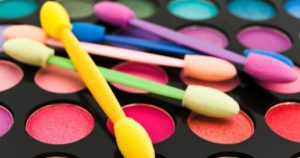
Recently, the Environmental Working Group (EWG), who provides funding to understand the risks of asbestos, conducted testing of makeup products to evaluate if asbestos was present. Out of the sample of 21 cosmetics, three contained traces of asbestos. This study is similar to one conducted by the Food and Drug Administration (FDA) from the previous year, wherein nine out of 52 cosmetics contained amounts of asbestos.
These tests reveal that some companies are not scrutinizing their manufacturing processes enough to detect asbestos in many consumer goods. Some critics point to industry standards that have not been updated since before World War II, decades prior to learning about the dangers of asbestos. Although the FDA enacted stricter regulations on pure talc in the 1970s, there has been little to no movement on furthering standards to keep asbestos out of widely used consumer goods.
Why is Talcum Powder Used in Some Consumer Goods?
Talcum powder has been used for decades in baby products, as well as personal hygiene items for adults. More cosmetic brands use talcum powder now for makeup products, especially powder cosmetics such as blush, coverup, eyeshadow palettes, highlighter, and setting powder. Talc is commonly used in cosmetics because of its useful properties, including the following:
- Absorbing oil and other moisture
- Acting as a filter
- Diluting color in makeup
- Making products translucent
- Preventing caking and clumping
- Providing a soft and silky texture
All of these benefits are appealing to consumers who use makeup.
What are the Cosmetic Asbestos Regulations?
The federal government has stated that no level of asbestos is considered safe. However, there are currently no cosmetic asbestos regulations. One main concern is that children and teenagers are more susceptible to asbestos in cosmetics. Children have thinner skin, so there is a greater chance of asbestos exposure if they use makeup. Products created for children are more likely to have talc, which also increases the likelihood of asbestos exposure. These products are not tested as often as cosmetics that are marketed for adults. It has been proven that mesothelioma can take decades to develop, which means health issues may not appear for a long time.
What is Being Done Following These Results?
Some of the tested products that have been found to contain levels of asbestos have been pulled off the market by manufacturers. With major companies facing class action lawsuits over cancers linked to baby powder and other talc-based products, cosmetic brands could be next. There are some steps consumers can take to protect themselves against asbestos exposure, such as:
- Finding alternate products to talc-based cosmetics.
- Staying informed on recalls and product warnings.
- Stopping use of a product if its product safety causes concerns.
- Researching what risks come with using certain products.
Philadelphia Mesothelioma Lawyers at Shein Law Protect the Rights of Those Affected by Contaminated Talc-Based Products
Some talc-based cosmetics may have traces of asbestos. If you believe you have been exposed to asbestos, the Philadelphia mesothelioma lawyers at Shein Law will fight on your behalf. Call us at 877-743-4652 or contact us online for an initial consultation. We have offices conveniently located in Philadelphia and Pennsauken, New Jersey to proudly serve clients throughout Pennsylvania and New Jersey.
